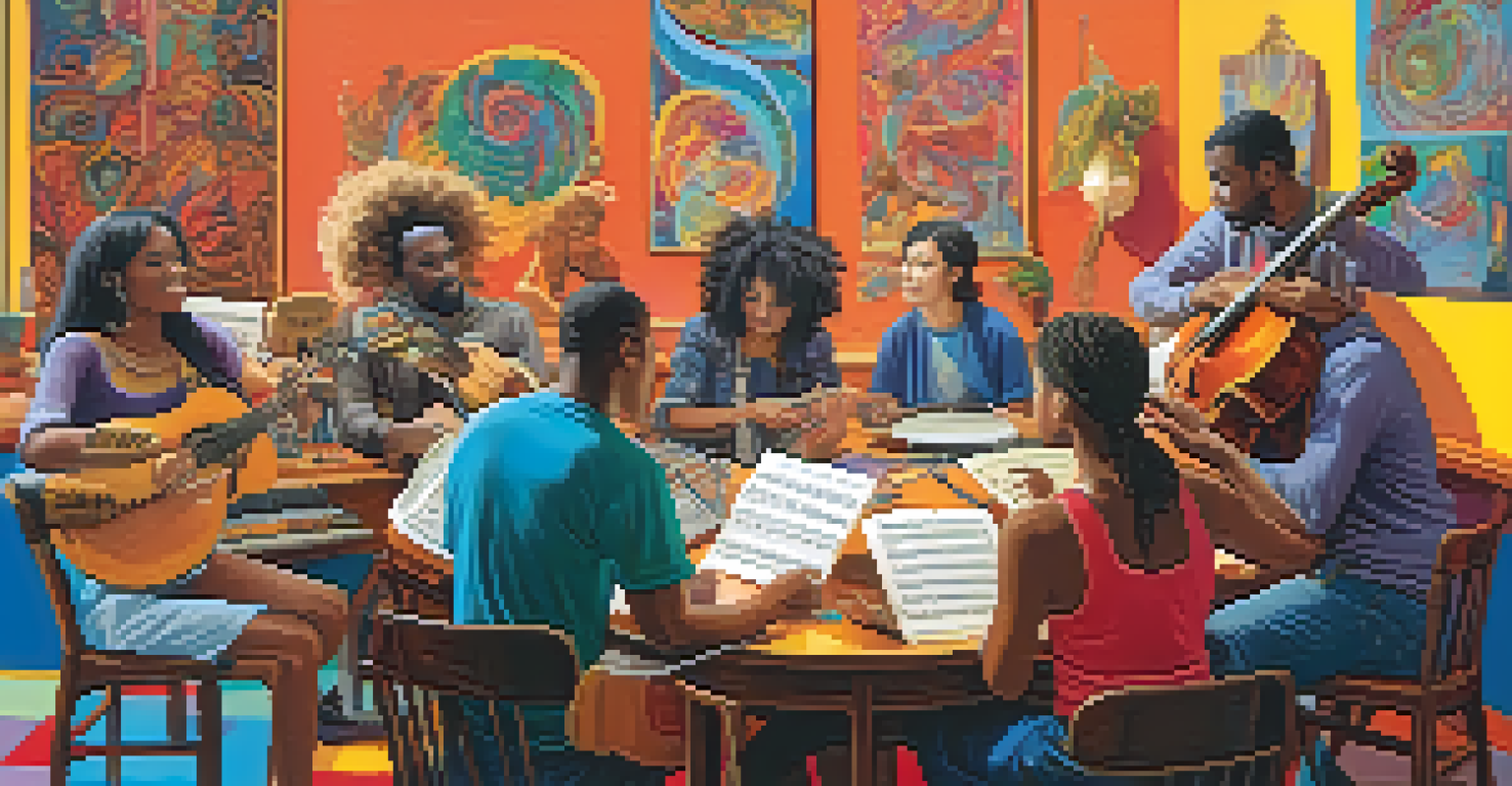Improving Your Guitar Transcription with Active Listening

Understanding Active Listening and Its Importance
Active listening is more than just hearing sounds; it's about truly engaging with what you're listening to. When it comes to guitar transcription, this skill becomes essential. It enables you to pick up nuances, rhythms, and techniques that you might otherwise miss.
Most people do not listen with the intent to understand; they listen with the intent to reply.
Think of it like watching a movie with your full attention versus multitasking. In the latter, you might miss key plot points, just like how distractions can lead you to overlook important notes in a guitar piece. By focusing entirely on the music, you're setting the stage for effective transcription.
Ultimately, active listening fosters a deeper connection to the music and enhances your ability to transcribe accurately. This foundational skill will make all the difference as you delve into more complex pieces and styles.
Setting the Right Environment for Active Listening
Creating a conducive listening environment is crucial for practicing active listening. Find a quiet space where you can immerse yourself in the music without interruptions. Dimming the lights or using headphones can help eliminate distractions and enhance your focus.

Consider the acoustics of your space as well; a room with soft furnishings can absorb sound better, allowing you to hear intricate details in the music. When you feel comfortable and focused, you're more likely to pick up on subtleties that are vital for transcription.
Master Active Listening Skills
Active listening is essential for accurately transcribing music, allowing you to pick up on nuances and techniques.
Setting aside dedicated time for listening—free from electronic distractions—can also enhance your practice. This intentional approach helps you build the habit of active listening, making it easier to apply it when transcribing later.
Breaking Down Music into Manageable Sections
When tackling a challenging piece, it helps to break it down into smaller sections. This method allows you to focus on specific parts of the music, making it easier to decipher complex notes and rhythms. Start with a few bars at a time, and gradually build up to longer segments.
The ear is the avenue to the heart.
Think of it like a jigsaw puzzle; tackling one piece at a time can prevent the process from feeling overwhelming. By concentrating on these smaller sections, you can hone in on details that contribute to the overall sound. Plus, it allows for a sense of accomplishment as you complete each segment.
Once you feel confident with a section, connect it back to the larger piece. This not only reinforces what you've learned but also aids in understanding how each part fits within the whole, enhancing your transcription skills further.
Using Technology to Enhance Active Listening
In today's digital age, technology can be a powerful ally in your active listening journey. Tools like slow-down apps and transcription software allow you to dissect tracks at your own pace without losing the audio quality. This can be especially helpful for intricate solos or fast-paced riffs.
Consider using software that lets you loop specific sections of a song. By repeating these parts, you're giving your ears time to acclimate to the nuances, which is essential for accurate transcription. The ability to slow down the tempo can make a significant difference in your learning curve.
Create a Distraction-Free Space
A quiet and comfortable environment enhances your focus, making it easier to engage with the music during transcription.
Additionally, recording yourself as you practice can provide valuable feedback. Listening back to your own playing can help identify areas for improvement and reinforce your understanding of the music, making the transcription process smoother.
Developing a Transcription Routine
Establishing a consistent transcription routine can significantly improve your skills. Dedicate specific times each week to practice transcription using the active listening techniques you've learned. This regularity helps reinforce the habit and makes active listening second nature.
Consider mixing up the genres or styles of music you transcribe. This diversity not only keeps the process interesting but also exposes you to different techniques and approaches, broadening your musical vocabulary. It’s like tasting a variety of cuisines to enhance your culinary skills.
As you develop this routine, track your progress. Celebrate small victories like accurately transcribing a challenging piece; these milestones will keep you motivated and invested in your growth as a guitarist.
Collaborating with Others for Better Learning
Collaboration can provide fresh perspectives and insights that enhance your active listening and transcription skills. Consider joining a local music group or online community where members share their transcriptions and techniques. This interaction can expose you to different styles and approaches.
Playing with others allows you to hear how parts fit together, enriching your understanding of the music. It’s like adding colors to a canvas; collaboration can bring depth to your musical interpretation and transcription efforts.
Establish a Consistent Routine
Regular practice and tracking progress in your transcription efforts can significantly improve your skills over time.
Moreover, discussing challenges and triumphs with fellow musicians can motivate you to push through roadblocks. You’ll find that sharing the learning journey can make the process not only more enjoyable but also more effective.
Reflecting on Your Progress and Setting Goals
As with any skill, reflecting on your progress is crucial for continued improvement. Take time to assess what techniques have worked well for you in your transcription journey. This reflection can help you identify strengths and areas for growth, guiding your future practice.
Setting specific, measurable goals can also provide direction. Whether it's transcribing a certain number of songs each month or mastering a particular style, having clear objectives keeps you focused and motivated. It’s like having a roadmap on a long journey.

Remember, the journey of mastering guitar transcription is ongoing. Celebrate your achievements, no matter how small, and continuously set new challenges to keep pushing your boundaries.